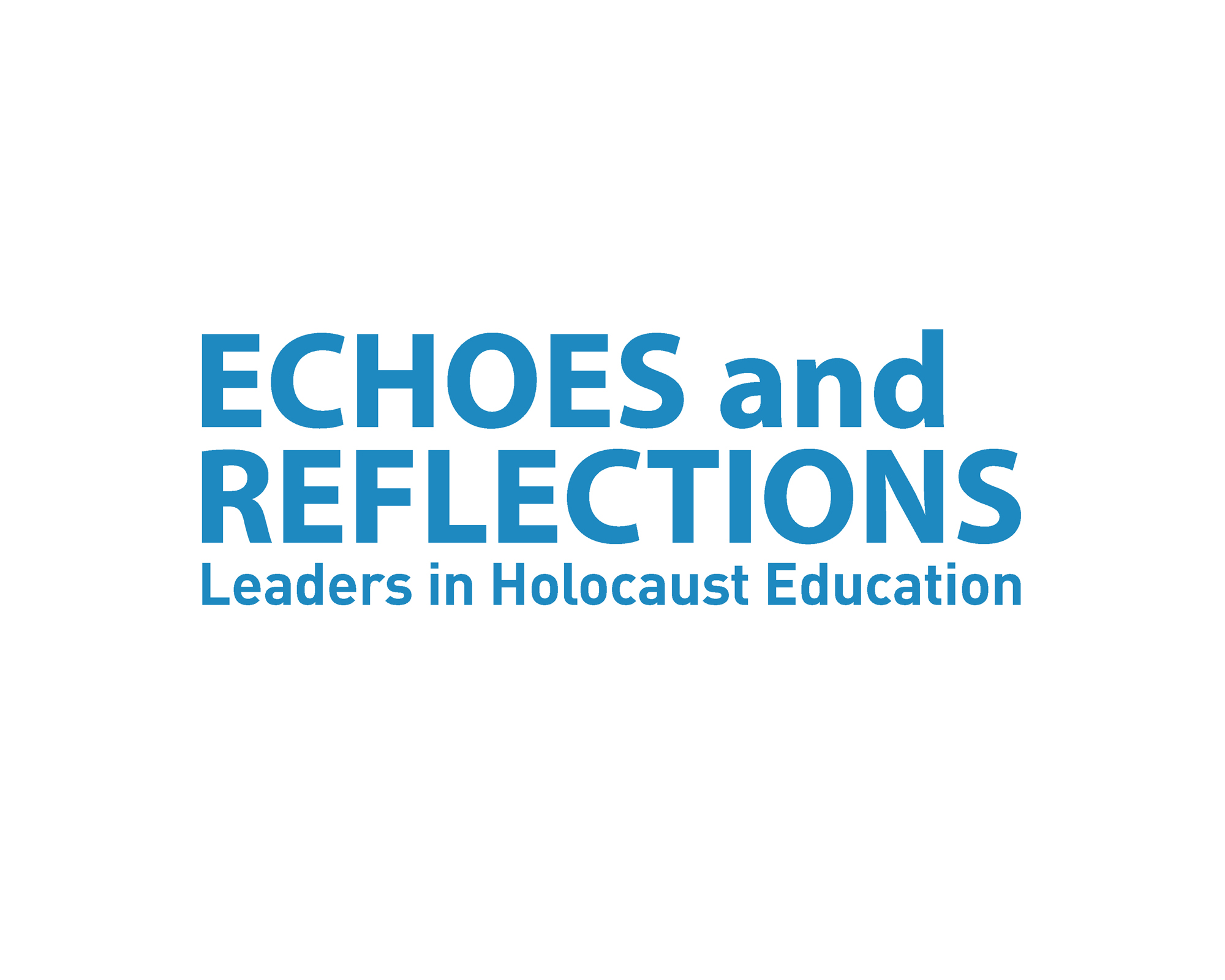Back to School with Echoes and Reflections - Part 6

Today continues a 10-part series called “Back to School with Echoes and Reflections.” Each installment takes a detailed look at one of the 10 Echoes and Reflections lessons.
Echoes and Reflections is a multimedia professional development program for secondary school teachers in the United States that provides them with accurate and authentic Holocaust information for their classrooms. Programs are held around the country at no cost to teachers or schools, and participants receive a complimentary copy of the 10-part Teacher’s Resource Guide that equips them with the tools they need to help today’s students study the Holocaust as a significant event in human history.
Echoes and Reflections combines the resources and competencies of three world leaders in education―the Anti-Defamation League’s experience in curriculum and professional development, access to USC Shoah Foundation’s Visual History Archive of survivor and witness testimonies and digital educational tools, and Yad Vashem’s historical expertise and primary source materials―resulting in the most comprehensive Holocaust education program available.
Echoes and Reflections includes everything educators need to teach the complex issues of the Holocaust. Each lesson within the Echoes and Reflections Teacher’s Resource Guide explores a different aspect of the Holocaust and encourages students in grades 6-12 to build an authentic and comprehensive portrait of the past as they frame their own thoughts, resulting in a deeper level of interest and inquiry.
The modular design of the Echoes and Reflections Teacher’s Resource Guide includes photographs, literature, artwork, diary entries, government documents and other primary source materials that teachers may easily photocopy and distribute to students. Lessons also incorporate testimony from USC Shoah Foundation’s Visual History Archive on DVD Each lesson addresses Common Core State Standards, and each one has been integrated into IWitness. IWitness is USC Shoah Foundation’s educational website that provides students and teachers access to more than 1,300 full life histories and testimonies of survivors and witnesses to the Holocaust and other genocides from the Visual History Archive for guided exploration, multimedia projects, activities and lessons.
To date Echoes and Reflections has prepared almost 20,000 educators and community leaders across the United States to use the Teacher’s Resource Guide effectively. Teachers interested in more information about Echoes and Reflections should contact echoes@adl.org.
Lesson 6: Jewish Resistance
Lesson 6 teaches students about the different methods of resistance that Jews employed in the ghettos, concentration camps and various other areas throughout Europe.
The idea of “resistance” is introduced through Polish survivor Roman Kent’s testimony. The examples of resistance Kent gives introduce students to the idea that Jewish resistance manifested itself in many forms and in response to many different types of suffering – starvation, isolation, dehumanization, etc.
However, it’s important that students understand that most Jews could not resist the Nazis; teachers ask students to think of reasons why resistance was, for the most part, impossible.
Teachers next explain the two types of resistance: cultural/spiritual and active/armed. The testimonies of Helen Fagin and Ruth Brand illustrate examples of cultural/spiritual resistance, such as Fagin’s secret school and Brand’s illegal fasting on Yom Kippur. After reading the handout Cultural and Spiritual Resistance, which contains primary source writings from Jews in the ghettos, students discuss why it was important for Jews to maintain their traditions during the Holocaust and what dilemmas they faced in doing so.
The next part of the lesson is about partisans and armed resistance. Mira Shelub and Sol Liber both describe acts of active resistance in their testimonies; Shelub as a partisan hiding in the Lipiczany Forest and Liber as a witness to resistance in the Warsaw ghetto. Shelub and Liber both give insight into how resistance didn’t mean “winning,” yet each act was significant.
A handout about partisans – Jewish and non-Jewish members of the underground movement who organized secret resistance to Nazi control while hiding in the forest – and an announcement by Abba Kovner, a leader of the resistance youth movement, teach students about the rewards and difficulties of carrying out such radical resistance in the face of almost certain defeat.
Finally, students learn about armed/active resistance in the ghettos and camps through handouts about different examples of armed resistance, including the Warsaw Ghetto Uprising, “Never Say,” the unofficial song of Jewish partisans, and a firsthand account of Jews who passed as Aryan during the war.
In IWitness, students may complete Information Quest activities about Helen Fagin, Ruth Brand and Roman Kent, or complete the Personal Strength to Survive Video Editing Activity. They may also view a clip of Peter Fischl reading his original poem “To the Little Boy with His Hands Up,” inspired by the iconic photo from the Warsaw Ghetto Uprising.
Next week – Lesson 7: Rescuers and Non-Jewish Resistance
Like this article? Get our e-newsletter.
Be the first to learn about new articles and personal stories like the one you've just read.